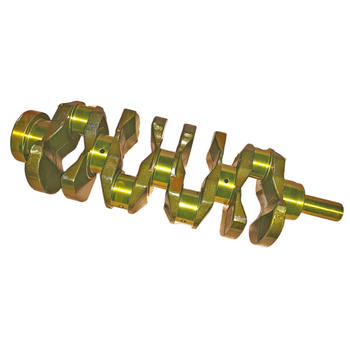Getting Started: Understanding Your Rebuild Goals
Before diving into crankshaft selection, let's take a step back and consider your engine rebuild goals. Are you looking for better performance, fuel efficiency, or simply restoring a classic engine? Defining your objectives will help narrow down your choices and ensure you make the right decisions.
The Role of Stroke and Rod Ratio
Crankshaft stroke and rod ratio are crucial factors in determining engine performance. Stroke refers to the distance the piston travels within the cylinder, while rod ratio is the length of the connecting rod divided by the stroke. Longer strokes generally provide more torque, while shorter strokes and lower rod ratios can lead to higher engine speeds.
Balancing Act: Weight and Material Considerations
Here's the thing: crankshaft weight plays a significant role in engine responsiveness and vibration levels. Heavier crankshafts can dampen vibrations but may reduce acceleration. Lighter crankshafts improve responsiveness, but they can be more prone to flexing and potential failure. As for materials, forged steel is stronger and more durable than cast iron, but it's also more expensive.
Choosing the Right Crankshaft Material
When deciding on the best crankshaft material for your project, consider your engine's intended use and power output. Forged steel crankshafts are ideal for high-performance engines, while cast iron may be sufficient for stock or mildly-modified engines. Remember, the right material for your build depends on your specific goals and budget.
Maintenance Matters: Crankshaft Journal Sizes
Interestingly enough, crankshaft journal sizes can impact both performance and maintenance. Larger journals can handle higher power output, but they may also require more frequent maintenance and bearings replacements. Smaller journals, on the other hand, typically last longer between rebuilds but may limit your engine's performance potential.
Journal Sizing Strategies
So, how do you choose the right journal size? If your goal is longevity, consider smaller journals. If performance is your top priority, larger journals may be the way to go. Keep in mind that you can always balance between the two by selecting a journal size that offers a compromise between power and maintenance intervals.
Avoiding Common Mistakes
One common mistake when selecting a crankshaft is focusing solely on horsepower. While horsepower is essential, it's only part of the equation. Factors like torque, engine response, and durability should also be considered. Additionally, ensure that your new crankshaft is compatible with your engine's block, rods, and bearings.
Consulting the Experts
If you're unsure about which crankshaft to choose, don't hesitate to consult with engine builders or machine shops. Their expertise can help you make an informed decision based on your specific project needs and goals.
Bringing It All Together
In conclusion, selecting the ideal crankshaft for your engine rebuild project involves considering multiple factors, such as stroke, rod ratio, weight, material, and journal sizes. By understanding your goals and the role each factor plays in engine performance, you'll be well-equipped to make the best decision for your unique project.
Next Steps
Now that you have a solid foundation in crankshaft selection, it's time to start researching options and consulting with experts. Remember, the perfect crankshaft for your engine rebuild is out there – you just need to find it!




